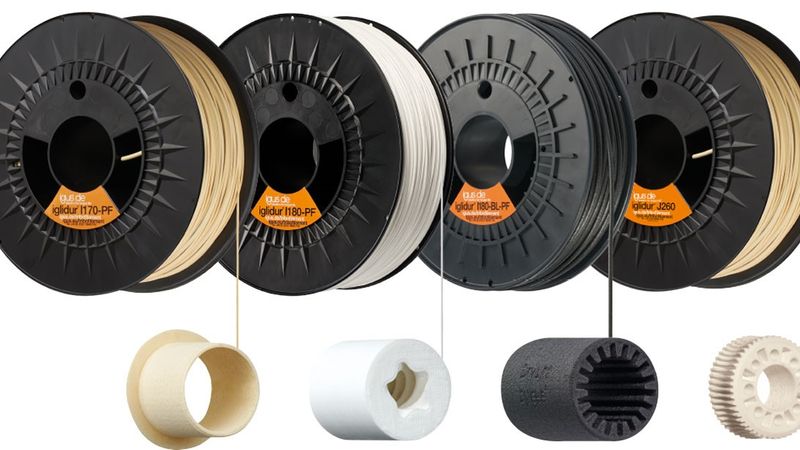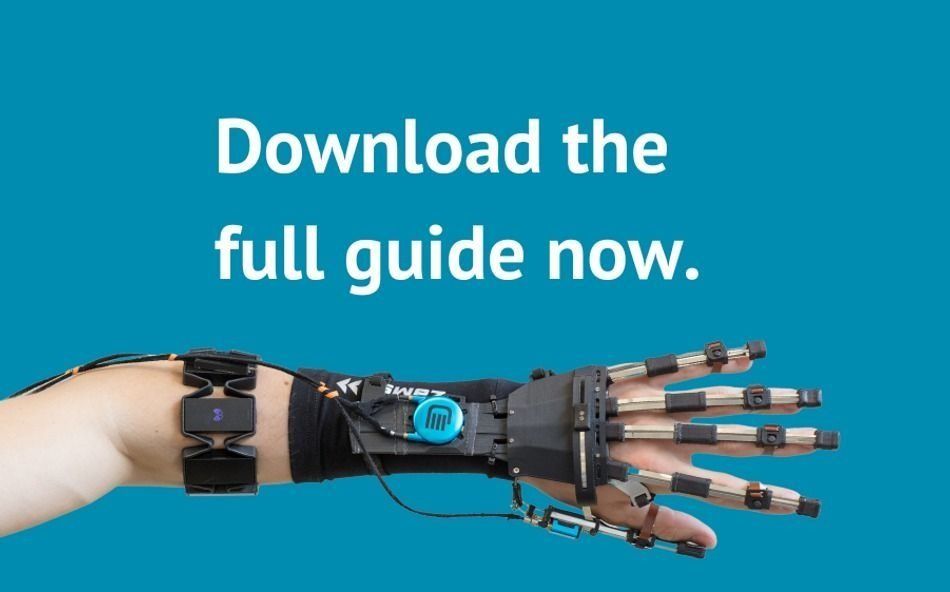Best Practices for 3D Printing with Wear-Resistant Plastics
Article #5 of The Engineer’s Guide to 3D Printing with Wear-Resistant Plastic Materials.
This is an extract from a chapter from our comprehensive report on 3D printing with wear-resistant plastics. If you want to dive deeper and access the full report, we invite you to download it below. Don't miss out!
An introductory guide to 3D printing with tribo-plastics
3D printing materials from igus enable the creation of self-sliding motion parts with an exceptionally long service life. Solid lubricants within the plastics lead to excellent wear resistance and low friction, significantly outperforming other thermoplastics like nylon 66.
Most igus low-friction 3D printing materials have a high level of processability. Many filaments, powders, and resins can be used with standard 3D printing hardware and do not require special expertise. However, to get the most out of the materials, a few best practices should be followed, from appropriate material handling to optimized slicer settings.
This article serves as an introductory guide to 3D printing with igus tribo-plastics, discussing pitfalls to avoid and methods for improving the performance of 3D printed parts. The option of outsourcing the printing of parts to the igus 3D printing service is also presented.
Material selection
The igus 3D printing materials portfolio currently consists of 16 products (15 of which can be purchased in the webshop), and users can improve part performance by choosing the right technology and material for the given application. For example, structural parts require a strong material like igumid P150 filament, while worm wheels with fine teeth are highly suited to a material like iglidur i6 powder.
When choosing a 3D printing material, the following factors should be considered:
- Available hardware: igus materials have good processability, but high-performance materials require industrial-grade hardware; for example, iglidur A350 has similar process parameters to PAEK materials and thus requires a high-temperature FFF 3D printer, while igumid P150 is fiber-reinforced and requires a hardened (steel) nozzle
- Ease of use: some igus materials are more challenging to print and require a higher level of printing expertise to achieve optimal results, while others like iglidur i150 are easy to use even for beginners using low-cost equipment
- Application requirements: igus materials offer different levels of performance in terms of strength, stiffness, abrasion resistance, temperature resistance, flame retardancy, electrostatic dissipation, and food safety; required material characteristics should therefore inform material selection
Best practices for tribofilaments
tribofilaments from igus require a few special considerations in order to achieve high-quality FFF 3D printed parts.
Material handling
All igus materials should be stored in a dry place to prevent moisture absorption. Special care must be taken when storing iglidur A350, which is more hygroscopic than other materials and more vulnerable to humidity. Drying the material in an oven or material dryer for four hours or more at 160 °C can prevent printing issues.
Build surface
The bonding agent is the most recommended method for good bonding and furthermore easy removal of parts after printing. The igus bonding agent is recommended for all igus non-high-temp materials: iglidur i150, iglidur i151, iglidur i180, iglidur J260, iglidur i190, igumid P150 and igumid P190.
As with all FFF materials, bed leveling should be carried out to ensure good first-layer adhesion and print accuracy.
Print settings
Because igus materials are not standard thermoplastics, users may have to create their own material profiles in their slicing software. The ideal settings vary depending on the chosen tribofilament.
Temperature settings play a key role when printing tribofilaments, and the requirements vary depending on the material. Materials like iglidur i150 and i151 require low nozzle, bed, and chamber temperatures. At the other end of the spectrum, materials like iglidur RW370 and A350 require nozzle temperatures above 340 °C and bed temperatures above 180 °C.
Cooling and fan settings are another important consideration with tribofilaments. To encourage adhesion between layers, it is not recommended to use a fan at all or at least the fan should be adjusted to the minimum necessary setting. This applies to all igus tribofilaments.
When it comes to print speed, the all-rounder filaments like iglidur i150 and i180 can handle fairly fast speeds of around 50 mm/s, while more advanced materials require more caution. For example, iglidur A350 should be limited to 20–30 mm/s, while iglidur J260 should not exceed 20 mm/s.
Nevertheless, there are igus printing profiles available for Ultimaker (Cura), Bambu-Lab, and Prusa.
Post-processing
tribofilaments from igus are suitable for tumbling, as well as other mechanical processes like drilling and milling.
Best practices for powders
For SLS 3D printer users, igus currently offers seven different tribologically optimized powders. These materials can be processed in a similar manner to nylon 12, despite drastically outperforming nylon in terms of coefficient of wear and service life, as well as being more resistant to moisture.
Handling
As with all SLS powders, igus materials require careful handling using personal protective equipment: gloves, a respirator, and safety glasses. Powder should be stored in a cool, dry place, and unsintered powder must be disposed of in accordance with local environmental regulations.
Print settings
All igus 3D printing powders have similar process parameters to nylon 12, although iglidur i8-ESD powder prints best with a process chamber temperature fractionally higher than the other materials.
Post-processing
SLS parts are suitable for a range of post-processing techniques, like chemical smoothing, tumbling, coloring, drilling, and milling.
Best practices for resins
Despite its outstanding strength and sliding performance, iglidur i3000 3D printing resin is easy to print on standard DLP and LCD 3D printers.
Handling
3D printing resins can irritate the skin, so protective nitrile gloves should be worn when handling the material. It should be stored in a dry, cool, and dark place to prevent premature curing. The resin should be stirred in a vat prior to printing.
Print settings
Print settings for iglidur i3000 do not differ greatly from standard resins, though a slightly longer exposure time may be needed. Fine support structures work best, as they can be easily removed.
The igus iglidur i3000 material is suited to highly detailed parts. To achieve the finest detail, users can use a layer thickness as small as 0.05 mm.
Getting the first layer right may require some trial and error. Poor adhesion can be solved with increased exposure time or light intensity for the burn in layer, while over-adhesion can be solved by adjusting the same parameters in the other direction.
Post-processing
Unlike FDM and SLS materials, igus resins are not suited to standard chemical or coloring finishing processes, but they require other post-processing steps specific to vat photopolymerization technologies. Mechanical finishing like milling and drilling is also possible for these parts.
Finished parts should be washed using isopropyl alcohol in cycles of no more than two minutes, with supports removed manually. UV post-curing should be carried out to achieve the desired level of hardness and strength, with more time needed for thick-walled parts, after which parts can be sanded to remove blemishes from support removal.
Outsourcing to igus
Engineers requiring high-quality, low-friction parts can use the igus 3D printing service to order custom parts directly from igus. This may be preferable for customers without their own 3D printing hardware or whose hardware does not meet the criteria for printing high-performance materials like iglidur A350.
Customers can try the igus 3D printing service for rapid fabrication and shipment of wear-resistant parts or shop the range of igus 3D printing materials for in-house printing.
The Engineer’s Guide to 3D Printing with Wear-Resistant Plastic Materials
Explore the transformative world of 3D printing as we delve into the intricacies of using wear-resistant plastic materials. This guide offers engineers a comprehensive overview of material properties, applications, and best practices. Unlock the potential of durable plastics and revolutionize your manufacturing processes.



